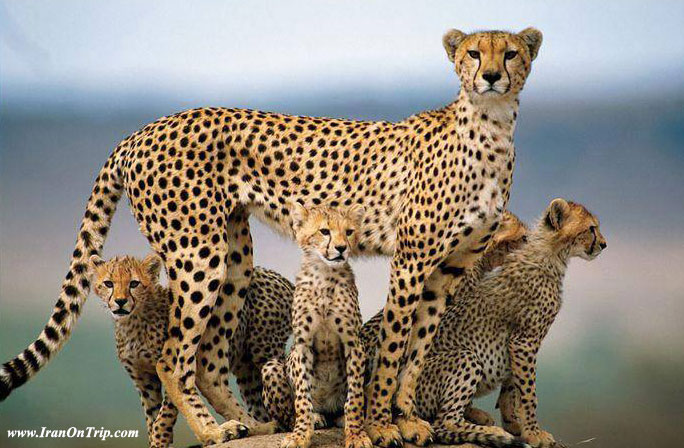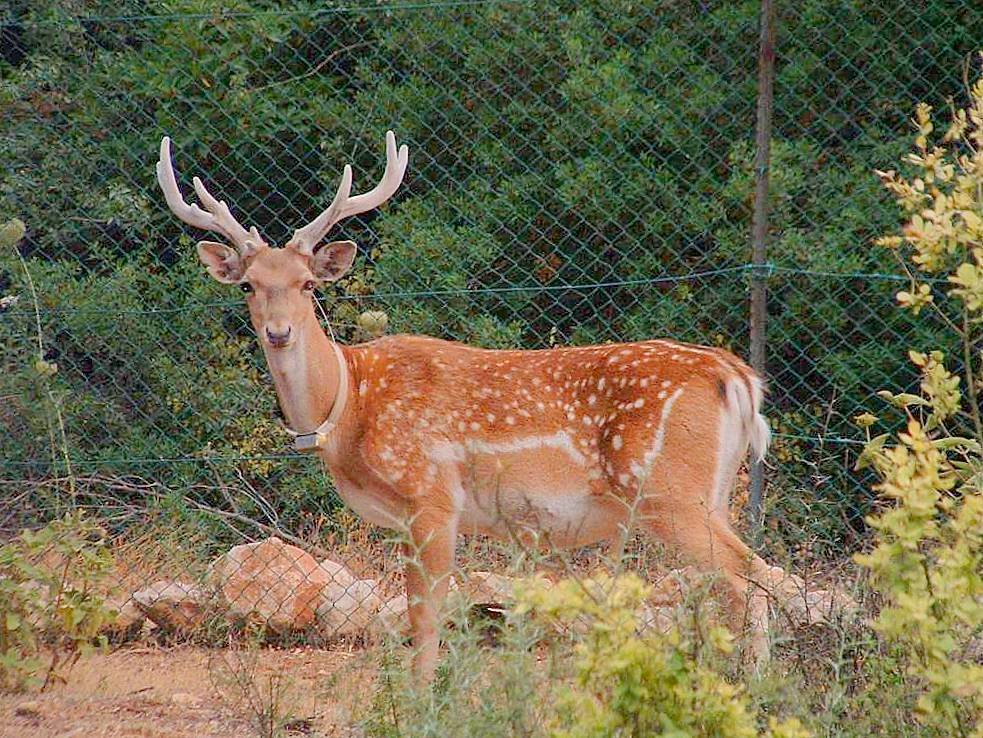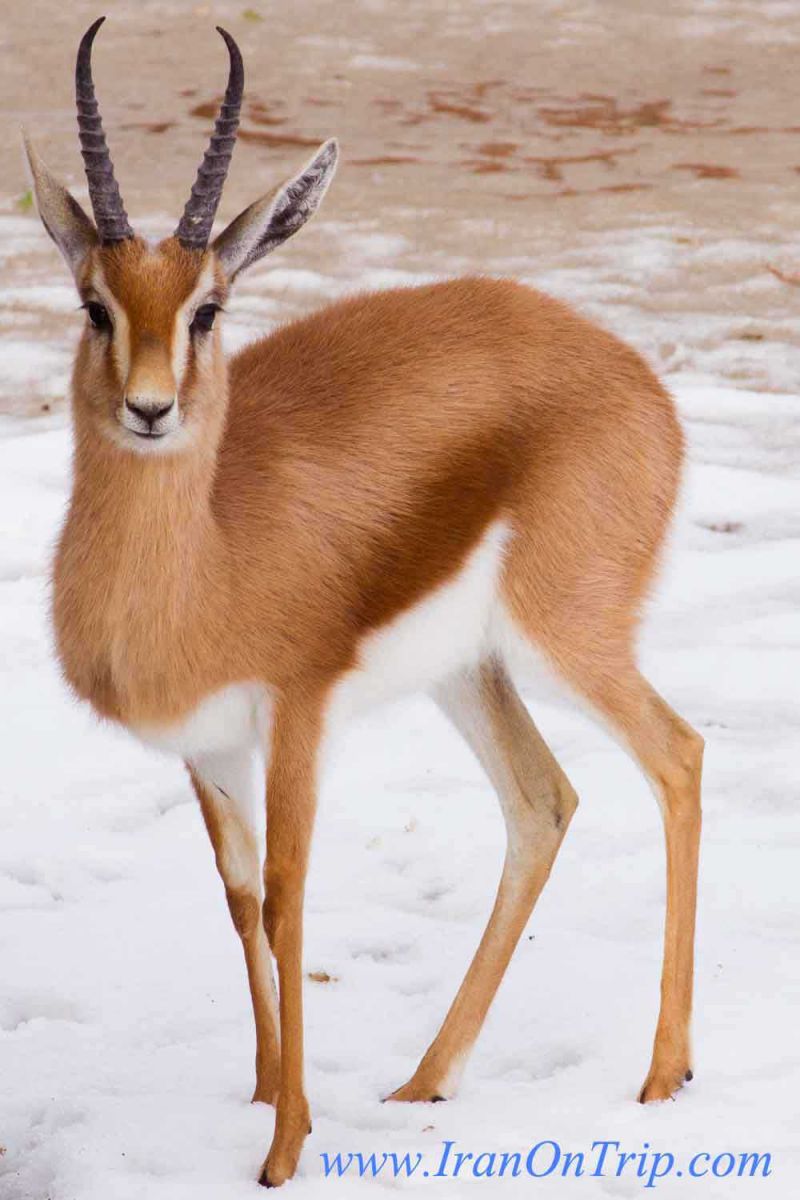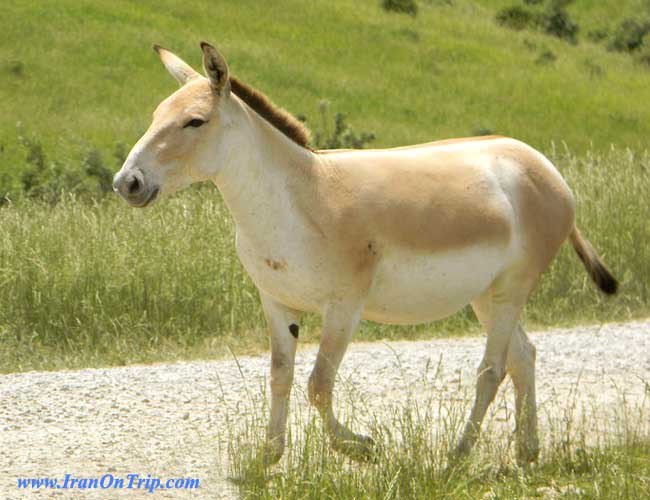Famous Animals Of Iran
Wildlife of Iran, includes leopards, bears, hyenas, wild boars, ibex, gazelles, and mouflons, which live in the wooded mountains. Jackals and rabbits are common in the country’s interior. Wild asses live in the Kavirs. Cheetahs and pheasants are found in the Caspian region, and partridges live in most parts of the country. Aquatic birds such as seagulls, ducks, and geese live on the shores of the Caspian Sea and the Persian Gulf, while buzzards nest in the desert. Deer, hedgehogs, foxes, and 22 species of rodents live in semidesert, high-elevation regions. Palm squirrels, Asiatic black bears, and tigers are found in Baluchistan. Tigers also once inhabited the forests of the Caspian region but are now assumed to be extinct.
Iranian Cheetah

The Asiatic Cheetah is now also known as the Iranian Cheetah, as the world's last few are known to survive mostly in Iran.DNA comparisons show that these Asiatic cheetahs split from other cheetahs, which lived in Africa, 30,000 years ago. Researchers suggest that Iran's cheetahs must be conserved to protect the future of all cheetahs. Cheetahs formerly existed in 44 countries in Africa but are now only found in 29. Historically, they were also recorded across southwest and central Asia but can now only be found in Iran.The Cheetah is the fastest land animal in the world. The head and body of the adult Asiatic Cheetah measure from 112 to 135 cm with a tail length between 66 and 84 cm. It can weigh from 34 to 54 kg, but the male is slightly larger than the female
Habitat
Cheetahs thrive in open lands, small plains, semi-desert areas, and other open habitats where prey is available. The Asiatic Cheetah is found in the Kavir desert region of Iran, which includes parts of the Kerman, Khorasan, Semnan, Yazd, Tehran, and Markazi provinces. The Asiatic Cheetah also seems to survive in the dry open Baluchistan province of Pakistan where adequate prey is available. The cheetah's habitat is under threat from desertification, increasing agriculture, residential settlements, and declining prey — caused by hunting and degradation in pastures by overgrazing from introduced livestock. Females, unlike males, do not establish a territory, which means they “travel” within their habitats. This is an important attribute to consider in conservation.Read more
Persian Fallow Deer

The Persian Fallow Deer (Dama dama mesopotamica) is a rare ruminant mammal belonging to the family Cervidae. Its taxonomic status is disputed, with some maintaining it as a subspecies of the Fallow Deer, while other treat it as a separate species, Dama mesopotamica.The Persian fallow deer differ from their European counterparts in one very prominent characteristics. The European males have palmate antlers which are their 'trademark'. By contrast the Mesos have regular tines. How tis is known, not from the few animals left in Iran in the wild, after all this small nucleus represents a very small fraction of an entire population spread throughout the fertile crescent. As such, the animals existing today may just be a morph. However, there is documentation.The picture below is a mosaic floor from an old synagogue in the ancient town of Zipori in northern Galilee in Israel, dating back to the year 400 AD. In this beautiful work of art, a leopard is depicted taking down a fallow deer (as is evident by the white spots.)Persian fallow deer are bigger than Fallow Deer,Read more
Pleske's Ground Jay
The Pleske's Ground Jay or Persian Ground Jay (Podoces pleskei) is a species of bird in the Corvidae family. It is endemic to Iran.
Iranian Ground Jay (Podoces pleskei) or Pleske's ground jay is one of the well known native species of deserts of the Caspio-Central Asian desert and to be specific; native to deserts alongside extreme east borders of Iran. The closer you get to the eastern central deserts of Iran the better chance of observing them you stand. One might mistake Iranian ground jay with Hoopoe Lark, But the coloring and plumage on Iranian ground jay is unique with no crest like Hoopoe Larks', only the look similar in shape and posture. Black bib is the key to distinguish Pleske's but lack of black bib on Juv. ground jays might be misleading. the distribution is known to be desert depressions of eastern Iran, mostly border habitats in Dusht-e-Lut of Khorasan and extreme Kerman. Northern most record from northern Semnan, south to Iranian Baluchistan.
Ground-Jay-Pleskes-Touran-IranGround jays or ground choughs belong to a distinct group of the passerine order of birds in the genus Podoces of the crow family Corvidae. They inhabit high altitude semi-desert areas from central Asia to Mongolia(All 4 species, while pleske's distribution is limited to eastern Iranian borders).
Ground jays show adaptations to ground living such as long, strong legs adapted to fast running and the ability to leap and bound onto boulders and rocks with great agility. Their long, curved thick bills are adapted for digging and probing.Read more
Dorcas gazelle

The Dorcas gazelle (Gazella dorcas), also known as the Ariel gazelle, is a small and common gazelle. The Dorcas gazelle stands about 55-65 cm (1.8-2.1 ft) at the shoulder, with a head and body length of 90-110 cm (3-3.6 ft) and a weight of 15-20 kg (33-44 lb). The numerous subspecies survive on vegetation in grassland, steppe, wadis, mountain desert and in semidesert climates of Africa and Arabia. About 35,000 - 40,000 exist in the wild. The extinct Saudi gazelle from the Arabian Peninsula has been previously considered as a subspecies of the Dorcas gazelle.
Persian onager

The Persian onager (Equus hemionus onager) is a subspecies of onager (Asiatic wild ass) native to Iran.It is "critically endangered" and "extremely rare"., with no more than 600 individuals left in the wild and only 30 individuals living within North American institutions. Currently, poaching for meat and hide, competition with livestock, and drought are the greatest threats to this species. Sometimes the term "onager" is reserved specifically for this subspecies. Information on the basic biology of the subspecies and how it differs from others is lacking, which hampers conservation efforts.
Neurergus Kaiseri (Salamander)

Everyone knows the tiger, the panda, the blue whale, but what about the other five to thirty million species estimated to inhabit our Earth? Many of these marvelous, stunning, and rare species have received little attention from the media, conservation groups, and the public. This series is an attempt to give these 'forgotten species' some well-deserved attention.The salamander was a mythical creature before it was a real one: the word salamander means a legendary lizard that both survived-in and could extinguish fire. A creature that the Ancient Greeks, including Aristotle, appeared to readily believe in.No one knows how the term salamander transferred from a mythical fire-dwelling monster to the small amphibious animals it applies to today. Perhaps the sight of salamanders like Luristan newt—charcoal-black and flame-orange—caused people in the seventeenth century to lend the name of myth to the taxa. Native to a tiny river region in the Zagros mountains of Iran, the Luristan newt Neurergus kaiseri stuns everyone who works with it.Read more
.....
.....
.....

.jpg)



























